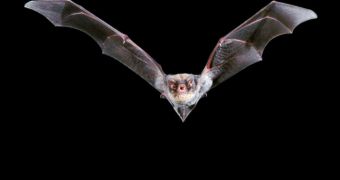This may come as a shock to many, but numerous infectious diseases have the ability to jump species, which is to say that they can develop for example in lizards, but then infect sparrows. The cross-species transmission (CST) of these diseases is very little understood, even though experts are well aware of the fact that numerous outbreaks originate in this phenomenon. Understanding it, however, proves to be an elusive goal, as evidenced by the large number of research teams working on it. But a collaboration of scientists just published a research, which provides additional insights into CST events.
“Some of the deadliest human diseases, including AIDS and malaria, arose in other species and then jumped to humans. Understanding that process is key to predicting and preventing the next big outbreak,” explains US National Science Foundation (NSF) Division of Environmental Biology (DEB) expert Sam Scheiner. The Division provided partial funding for the new investigation, which was also supported with grant money secured from the NSF Directorate for Geosciences. The funds were provided to researchers at the University of Georgia through the NIH-NSF Ecology of Infectious Diseases Program.
The Georgia team, which was led by expert Daniel Streicker, published its findings in the latest issue of the esteemed journal Science. Researchers from the US Centers for Disease Control (CDC), the University of Tennessee-Knoxville, and the Western Michigan University, also collaborated on the research. The group sought to determine precisely how often CST takes place in complex, multi-host communities, and the researchers even managed to produce a fairly accurate estimate of the phenomenon's incidence in nature.
“What's really important is that molecular sequence data, an increasingly cheap and available resource, can be used to quantify CST,” Streicker reveals. “This is a breakthrough. The team defined, for the first time, a framework for quantifying the rates of CST across a network of host species that could be applied to other wildlife pathogens, and they developed novel methods to do it,” explains UGAscientist Sonia Altizer. “There's a popular idea that because of their potential for rapid evolution, the emergence of these types of viruses is limited more by ecological constraints than by genetic similarity between donor and recipient hosts. We wanted to see if that was the case,” Streicker concludes.

 14 DAY TRIAL //
14 DAY TRIAL //